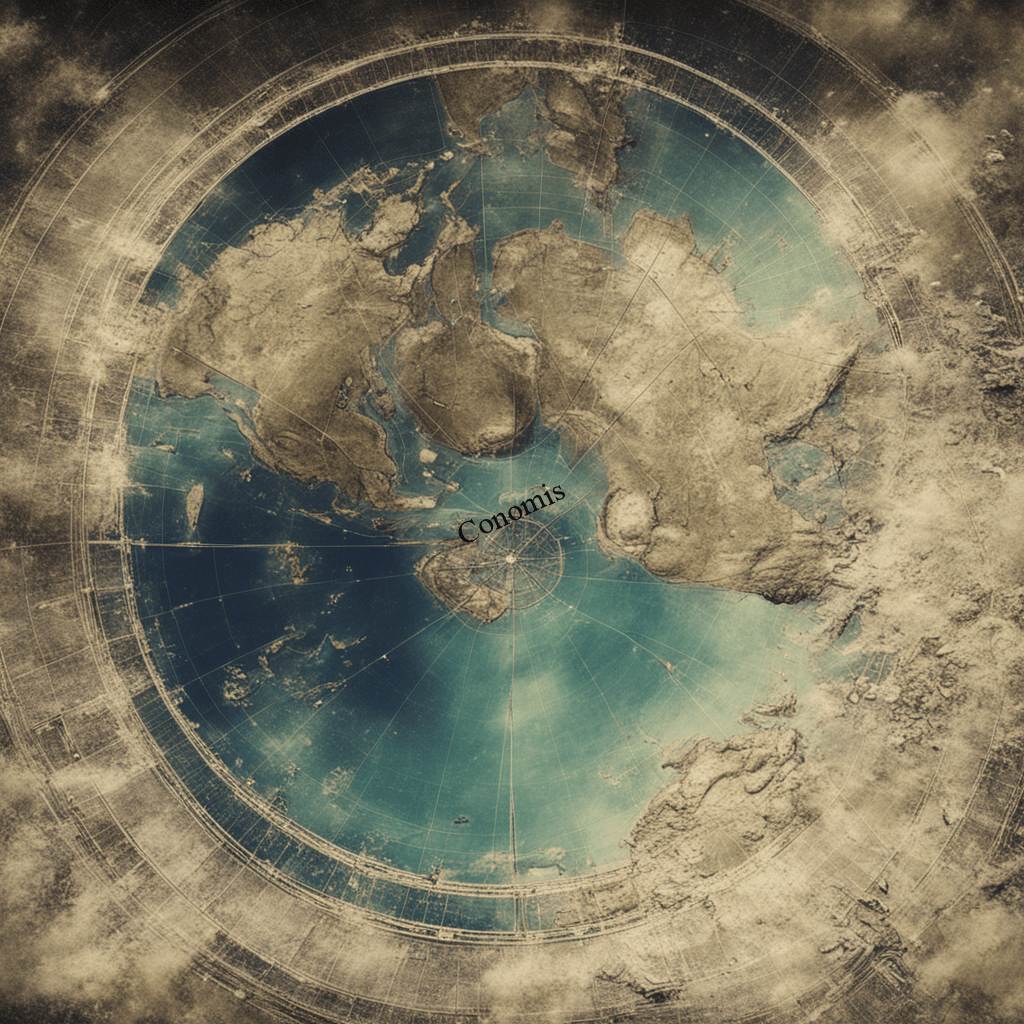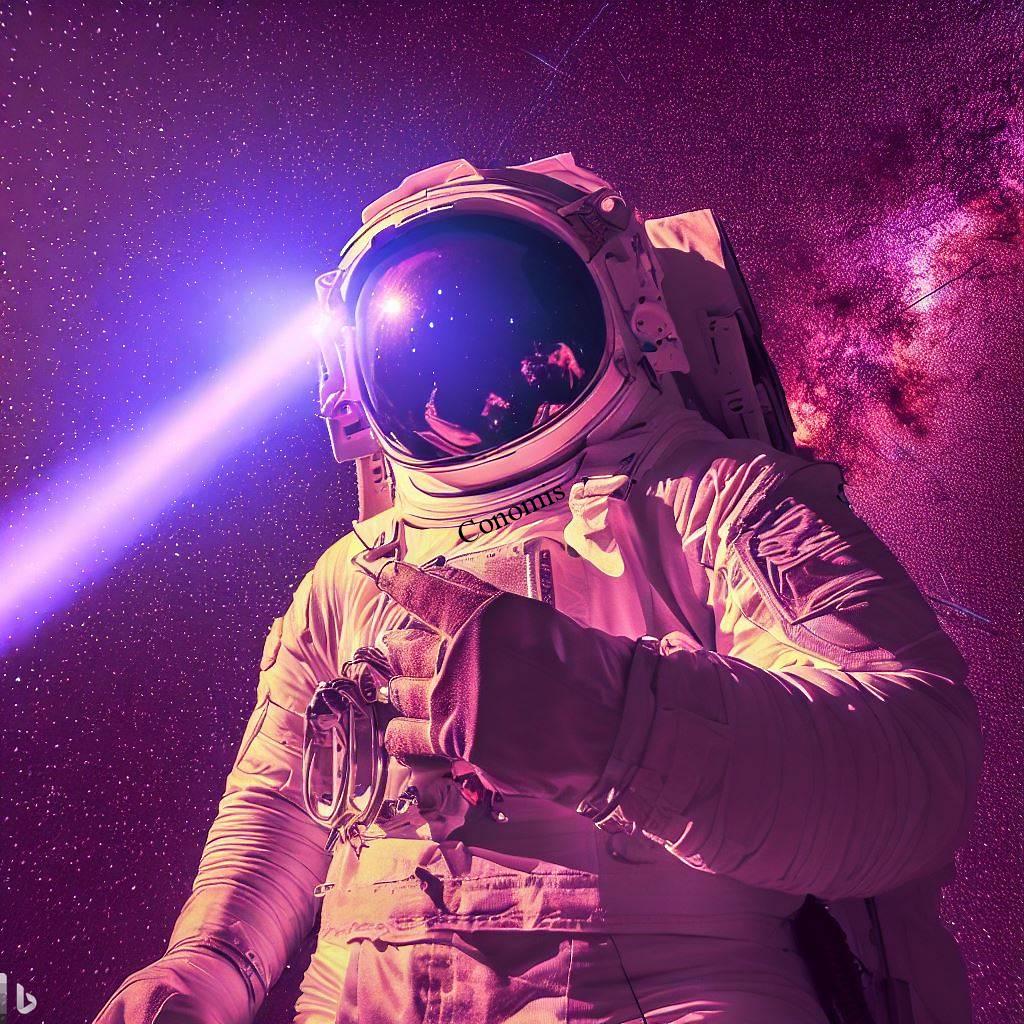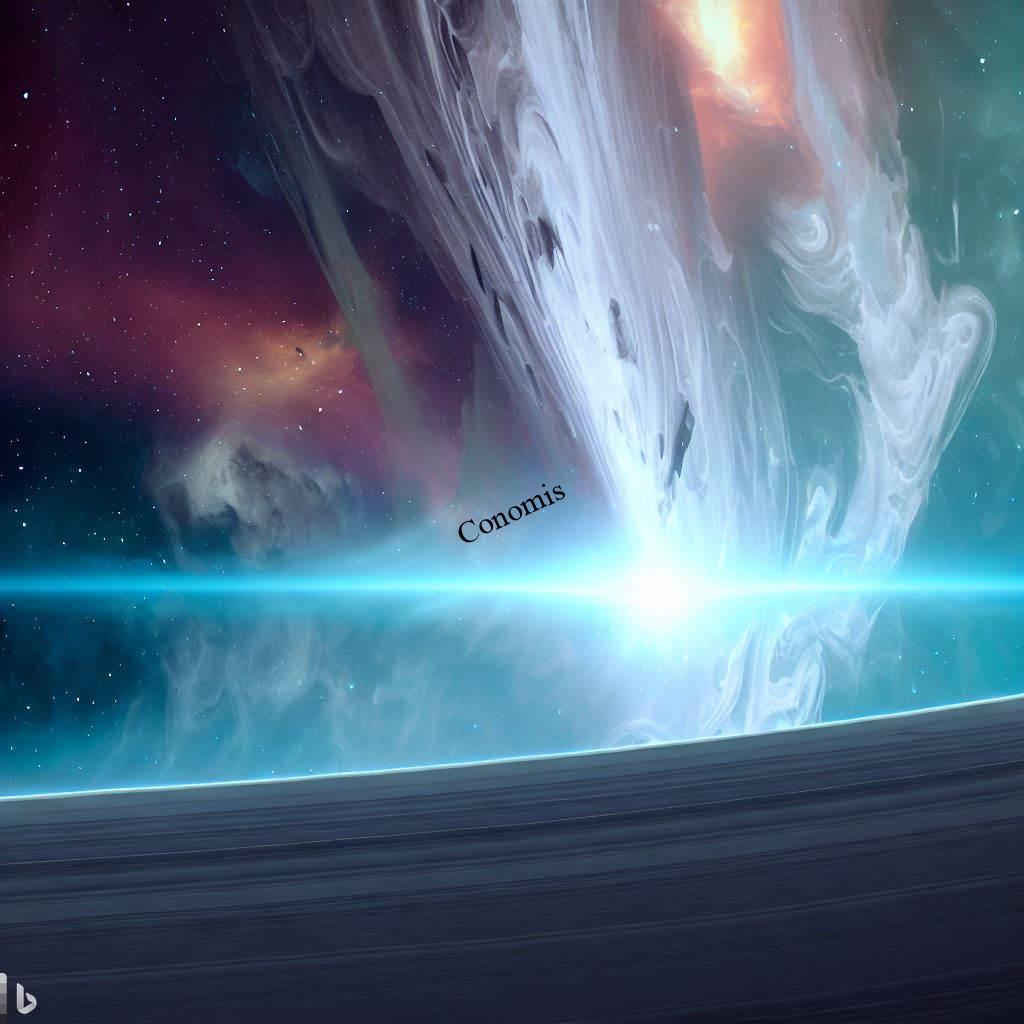Table of Contents
Introduction
You’ve probably heard the spooky stories and ominous tales about the Bermuda Triangle, that enigmatic patch of ocean where ships and airplanes seem to just vanish into thin air. The triangle, with its vertices at Miami, Bermuda, and Puerto Rico, has been the subject of countless investigations, documentaries, and even blockbuster movies. It’s a mystery that has both thrilled and perplexed humanity for decades. Some people invoke paranormal explanations, tossing around ideas like underwater alien bases or time warps. Others are more pragmatic, attributing these strange disappearances to magnetic anomalies, rogue waves, or human error.
But hold onto your hats, because what if I told you that Earth isn’t the sole proprietor of a Bermuda Triangle? That’s right, our planet’s enigmatic area has a cosmic cousin—an area in space that is as baffling as it is mysterious. This notion might sound like it’s ripped straight from the pages of a science fiction novel, but it’s not. Scientists and space agencies actually acknowledge its existence and are actively researching its characteristics. Named the “South Atlantic Anomaly,” this space-time riddle offers an array of unusual phenomena that affect both spacecraft and human missions alike.

Just like its oceanic counterpart, the South Atlantic Anomaly—or the Bermuda Triangle of Space, as some prefer to call it—raises more questions than answers. It’s the kind of subject that tickles the imagination while also challenging scientific inquiry. Is it a danger zone or merely an unsolved puzzle waiting to be cracked?
Intrigued? So are we. Let’s journey together into the heart of this cosmic Bermuda Triangle and explore the tantalizing blend of facts and fictions that surround it.
The Earth’s Bermuda Triangle: A Recap
Before we dive further into the mysteries of the cosmic Bermuda Triangle, let’s hit the rewind button and revisit Earth’s own Bermuda Triangle. This infamous stretch of ocean, roughly bounded by Miami, Bermuda, and Puerto Rico, has captured our collective imaginations for generations. It’s a place shrouded in folklore, where ships and planes have been said to disappear without a trace. Some reports even venture into the realm of the paranormal, suggesting the involvement of alien abductions or underwater city ruins as plausible explanations for these baffling disappearances.
However, the scientific community takes a more grounded approach to understanding the Bermuda Triangle. Instead of attributing the events to extraterrestrial activities or other fantastical theories, researchers are more inclined to point to natural causes. Phenomena like magnetic anomalies, strong underwater currents, and even methane hydrate eruptions are often cited as the likely culprits behind the mysterious vanishings. These factors, while not as sensational as alien theories, offer a more rational basis for the occurrences within this enigmatic region of the Atlantic Ocean.

So, as we prepare to explore the mysteries of the Bermuda Triangle in space, understanding the theories and facts surrounding Earth’s own Bermuda Triangle provides essential context. It serves as a foundation from which we can launch into the deeper, darker mysteries of the universe.
Transition to Space’s Bermuda Triangle
Now that we’ve revisited Earth’s infamous Bermuda Triangle, let’s elevate our gaze skyward. Imagine for a moment a Bermuda Triangle in the emptiness of outer space. Just as mysterious, just as perplexing, but set against the vast backdrop of the cosmos. The notion may sound like something out of a science fiction novel, but rest assured, it’s anything but fiction. This idea isn’t just intriguing; it’s of vital importance. In an era where we are reaching for the stars, literally—planning missions to Mars and even entertaining the thought of interstellar colonization—understanding all potential cosmic hazards is crucial.
So, why does a space version of the Bermuda Triangle matter? Think about it: we’re in an age of rapid technological advancements in space exploration. From SpaceX’s ambitious plans to NASA’s ongoing missions, our boundaries are expanding. We have not just rovers but also future human missions aiming for other celestial bodies. A mysterious area in space that could potentially disrupt these missions, even in the slightest, deserves our full attention. It’s not merely a subject of curiosity; it’s a subject of safety, research, and technological advancement.

In this context, exploring the intricacies of what’s colloquially known as “Space’s Bermuda Triangle” can offer us invaluable insights. If Earth’s Bermuda Triangle has taught us anything, it’s that mysteries can often be explained or, at least, made less dangerous through understanding. Translating that philosophy to space could make the difference between a successful mission and a catastrophic failure. The South Atlantic Anomaly, as it is scientifically known, is not just a tale to entertain or terrify—it’s a reality that could impact our spacefaring future.
As we venture further into the cosmos, the need to unravel its enigmas becomes ever more pressing. Let’s delve into the mystery that is Space’s Bermuda Triangle, armed with scientific curiosity and a dash of adventurous spirit.
What is Space’s Bermuda Triangle?
So what exactly is this mysterious region in space we’re referring to as Space’s Bermuda Triangle? Scientifically known as the South Atlantic Anomaly (SAA), this zone exists close to Earth, specifically in an area where the planet’s inner Van Allen radiation belt comes closest to the Earth’s surface. It’s not just a speculative or sensational topic; it’s a very real concern for scientists, engineers, and astronauts.
In this unique region, satellites often experience glitches, and their instruments sometimes malfunction. It’s like Earth’s magnetic field decided to throw a curveball just to keep things interesting—or perplexing, depending on your perspective. But it doesn’t stop there. Astronauts passing through this zone on space missions have reported seeing strange, unexplained flashes of light. These are not the typical Northern or Southern Lights we’re familiar with; they’re anomalies that can’t easily be dismissed.

Understanding the South Atlantic Anomaly is not just a matter of satisfying our collective curiosity; it’s a question of technological integrity and astronaut safety. The strange behaviors and phenomena in this part of space could, potentially, have implications for future space missions, whether they are unmanned satellites or human explorers. So the next time you hear about Space’s Bermuda Triangle, know that it’s a subject that reaches far beyond the realm of science fiction.
Origin Stories and Popular Theories
When it comes to unraveling the mysteries of Space’s Bermuda Triangle, or the South Atlantic Anomaly, theories abound. There’s no shortage of hypotheses attempting to explain the oddities witnessed in this cosmic zone. Some of these theories would fit snugly into the plot of a blockbuster sci-fi movie, replete with extraterrestrial meddling or hidden black holes. These intriguing but largely speculative ideas often capture public imagination, creating a sense of wonder and fear. After all, the idea that an otherworldly force or a celestial object could be affecting our technology and confusing our astronauts is both enthralling and terrifying.
However, the scientific community tends to favor more grounded theories. Most researchers are not looking to science fiction but rather to Earth’s magnetic fields and space radiation to find answers. The Earth’s magnetic field, which protects us from solar and cosmic radiation, behaves differently in the South Atlantic Anomaly. In this region, the inner Van Allen radiation belt comes much closer to Earth’s surface than elsewhere, resulting in increased radiation levels. This intensification in radiation could very well be the culprit behind the bizarre occurrences reported, from satellite malfunctions to those perplexing flashes of light seen by astronauts.

It’s vital to separate fact from fiction as we seek to understand this cosmic enigma better. While theories involving extraterrestrial interference or concealed black holes might make for captivating dinner table conversation, the more plausible explanations, grounded in known scientific principles, offer us the most promising paths to comprehension and potential solutions. So, while the allure of the fantastical might be hard to resist, it’s the rigorous scientific inquiry that will eventually unlock the secrets of our cosmic Bermuda Triangle.
How it Affects Space Missions
Understanding the South Atlantic Anomaly is not just an academic exercise; it has real-world implications for both manned and unmanned space missions. This region is not something that space agencies take lightly; it’s a zone that they actively try to understand and mitigate against. Case in point: the Hubble Space Telescope, one of the most famous astronomical observatories, deliberately avoids taking readings when it passes through this region. Think about that for a second: an instrument designed to peer into the farthest reaches of the universe has to shut down its operations, even if momentarily, when traversing this specific area near Earth. That’s a big deal.
The reason is straightforward: the increased levels of radiation and magnetic field anomalies in the SAA can severely disrupt the sensitive instruments onboard satellites and other space-based platforms. But it’s not just about instruments; human lives are also at stake. Astronauts passing through the Anomaly report strange visual phenomena, but more significantly, the elevated radiation levels could potentially pose long-term health risks if not appropriately managed. A glitch or malfunction at the wrong time during a manned mission could be disastrous, to say the least.

Space agencies like NASA have actually adjusted the orbits of satellites to minimize the time they spend in the South Atlantic Anomaly. Certain precautionary measures, like additional shielding, are also in place to protect both equipment and astronauts. In other words, space missions—both current and future—are directly shaped by the existence and characteristics of this cosmic Bermuda Triangle. Understanding it better could be the key to smoother, safer missions as we continue to explore the great beyond.
Is Space’s Bermuda Triangle Dangerous?
When it comes to the question of danger, how worried should astronauts and space agencies be about the South Atlantic Anomaly? The short answer is, not overly, but caution is strongly advised. While the region has its quirks—satellite anomalies, odd visual phenomena, elevated radiation levels—it’s not regarded as an outright “no-go zone” in space. Most importantly, the perils it presents are not yet considered life-threatening, but they can’t be ignored either.
Space agencies like NASA take calculated risks all the time, whether it’s landing a rover on Mars, sending a probe to the edge of the solar system, or planning a manned mission to the Moon. The South Atlantic Anomaly falls under the category of manageable risks for them. Measures like adjusted satellite orbits and additional shielding on spacecraft help mitigate the impact of the SAA’s unique characteristics. Furthermore, missions are often programmed to shut down non-essential systems and halt data collection when passing through this region, as a precautionary measure.

So, should astronauts be frightened? Not necessarily. Concerned and cautious? Absolutely. While the South Atlantic Anomaly doesn’t warrant panic, it does merit rigorous scientific study and thoughtful preparation. In the grand scheme of space exploration, it’s an obstacle, not a dead-end. But as we venture further into space and undertake more ambitious missions, understanding and mitigating the risks associated with this cosmic Bermuda Triangle will become increasingly important.
The Science Behind it
The root cause of all the mysterious happenings in the South Atlantic Anomaly can be traced back to the Earth’s magnetic field. Specifically, the magnetic field is weaker in this region, which allows higher levels of radiation to penetrate. But why does this matter? In simple terms, radiation is not your electronic equipment’s best friend. When you’re dealing with highly sophisticated machines like satellites or the International Space Station, even a small glitch due to radiation can cause significant issues.
This weakened magnetic field is what leads to the myriad of glitches in electronic systems. Instruments and sensors that would typically function flawlessly suddenly start to behave unpredictably. For instance, if a satellite is capturing weather data or high-resolution images, these could become distorted or entirely unusable when passing through the SAA. It’s like hitting a patch of “dead air” where instruments momentarily lose their reliability.

As for the astronauts, the increased radiation levels also cause charged particles to interact with the human retina, resulting in the occasional visions or “shooting stars” that astronauts report. These aren’t hallucinations or tricks of the mind but actual physiological reactions to the environmental conditions in this region.
In essence, the science behind the South Atlantic Anomaly is rooted in our planet’s magnetic behavior and its interaction with cosmic radiation. While the phenomena may sound mystical or eerie, they are, in fact, explainable through established scientific principles. The challenge lies in finding effective ways to mitigate these effects as we continue to push the boundaries of space exploration.
Debunking the Myths
Let’s set the record straight: the South Atlantic Anomaly isn’t a playground for space dragons or a portal to other dimensions, as some myths or wild theories might suggest. While the concept of a “Bermuda Triangle in space” might conjure images fit for a science fiction novel, the reality is far less fantastical but no less intriguing. Most of the phenomena occurring in this region can be attributed to identifiable and measurable scientific factors, mainly Earth’s magnetic field and radiation from space.
That said, it’s important to acknowledge that the mystery surrounding the South Atlantic Anomaly is far from solved. We may have plausible scientific explanations for why satellites glitch or why astronauts see flashes of light, but our understanding is far from complete. As technology advances and our research methods improve, who knows what new insights we might uncover?

So, while there’s no evidence to suggest the presence of anything supernatural or otherworldly in this region of space, the scientific community keeps an open mind. The focus is on continuous investigation and research to demystify this cosmic puzzle fully. However, it’s crucial to distinguish between entertaining yet unproven theories and facts supported by data and observation. In doing so, we can better prepare for the challenges this space region poses while keeping the door open for new, mind-blowing discoveries that defy our current understanding.
Case Studies
When it comes to understanding the South Atlantic Anomaly, anecdotal accounts and theories only get us so far. Hard data is where the real insights lie, and in this context, case studies involving satellites offer a treasure trove of information. Over the years, a number of satellites have experienced malfunctions while crossing this region. These aren’t just isolated incidents but recurring events that have caught the attention of researchers and space agencies worldwide.
While alarming at first glance, these malfunctions serve as a double-edged sword. On the one hand, they illustrate the very real challenges and risks posed by the South Atlantic Anomaly. These incidents serve as wake-up calls, reminders of what can go wrong and the kinds of disruptions we can expect. On the other hand, they provide an invaluable source of data for scientific research. Every malfunction allows scientists to test existing theories and hypotheses about the SAA. Think of these events as unplanned experiments, situations where real-world conditions offer a testing ground for scientific inquiry.

So yes, while satellite malfunctions triggered by the South Atlantic Anomaly are concerning, they also represent opportunities for advancement in our understanding of this region. By studying these cases rigorously, we don’t just learn about what went wrong; we gather clues that bring us closer to unraveling the complex tapestry of factors that make up this fascinating but perplexing zone in space.
Ongoing Research and Future Implications
Unraveling the mysteries of the South Atlantic Anomaly is not a one-off task but an ongoing endeavor that carries significant implications for the future of space exploration. Organizations like NASA are at the forefront of this research, and for a good reason. Understanding the complexities and nuances of the SAA is not just an academic exercise but an essential ingredient for the success of future space missions—both manned and unmanned.
Researchers use data from satellites that have experienced malfunctions, observations from astronauts, and mathematical models to piece together the enigma that is the South Atlantic Anomaly. This kind of research is akin to putting together a complicated jigsaw puzzle. Each study, each data point, each observation serves as a piece that helps to complete the bigger picture. But make no mistake; there are still plenty of pieces missing, and the puzzle is far from complete.

What this means for the future is profound. As we aim for ambitious goals like sending humans to Mars or exploring the outer reaches of our solar system, knowing how to navigate through or around the SAA could be crucial. Ignorance is not an option; space agencies must equip themselves with comprehensive knowledge about this region to plan successful missions. As technology evolves and our reach in space extends, the importance of understanding the South Atlantic Anomaly will only grow.
The Curiosity and Mystery: Why We Care
There’s something inherently captivating about mysteries, be they on Earth or in the cosmos. Whether it’s the enigmatic nature of the Bermuda Triangle or the puzzling characteristics of the South Atlantic Anomaly, these areas of uncertainty compel us to dig deeper and ask questions. But why? Why are we, as a species, so fascinated by the unexplained?
Part of it might be our innate sense of curiosity, that fundamental human trait that has driven every scientific discovery, every expedition, and every leap in understanding that we’ve ever made. We are hardwired to seek out the unknown, to push boundaries, and to fill in the blanks on our collective maps, be they geographical or conceptual. There’s a thrill in tackling something that defies easy explanation; it engages our problem-solving skills and feeds our intellectual appetites.

Then there’s the allure of the challenge itself—the ‘cosmic puzzle’ that the South Atlantic Anomaly presents. In an age when so much information is just a click away, genuine mysteries serve as humbling reminders of the limits of our current knowledge. They provide a field for scientific adventure, places where established theories can be tested and new ideas can flourish.
In essence, our fascination with regions like the South Atlantic Anomaly underscores our drive to explore, to understand, and to continually redefine the frontiers of human knowledge. And that, perhaps, is the most compelling reason why we care so much.
Public Opinion and Pop Culture
The enigmatic nature of zones like the South Atlantic Anomaly isn’t just a subject of scientific scrutiny; it has also captured the public imagination, seeping into pop culture and igniting conversations around the dinner table. Movies like “Interstellar” and popular science documentaries have played a significant role in shaping this narrative. The concept of a “dangerous zone” in space where strange and unexplainable things happen is fertile ground for storytelling, and it resonates with audiences because it taps into our innate curiosity and our appetite for the unknown.
Think about it: Who isn’t intrigued by the idea of a mysterious region in space where even our most advanced technologies go haywire? It’s like the ultimate escape room but on a cosmic scale, and it provides a backdrop against which human ingenuity, courage, and resilience can be dramatically portrayed. These stories, whether they’re told through blockbuster movies or investigative documentaries, give faces and emotions to complex scientific phenomena, making them accessible and compelling for the average person.

But there’s also a flip side to this cultural fascination. While pop culture can spark interest and even inspire a new generation of scientists, it can also perpetuate myths and misconceptions. Thus, it becomes increasingly important for scientific communities to engage with the public, to clarify what is known and what remains speculative in our understanding of mysterious zones like the South Atlantic Anomaly. Because in the space between fact and fiction, there’s a vast universe of possibilities waiting to be explored.
A Reality Check: Facts vs Fiction
When it comes to the South Atlantic Anomaly, the truth lies somewhere between the sensationalism of pop culture and the rigid confines of scientific data. Yes, the SAA isn’t the malevolent cosmic trap that some conspiracy theories or science fiction tales would have us believe. But to label it as entirely harmless would also be misleading. What we have here is a nuanced reality—a middle ground coated in layers of complex science and just a dash of lingering mystery.
Here’s the deal: The South Atlantic Anomaly presents real challenges, especially in the context of space missions. Satellites have malfunctioned, and astronauts have reported anomalies. However, most of these incidents can be attributed to the effects of Earth’s weaker magnetic field in that region and the consequent exposure to higher levels of cosmic radiation. It’s not a space ‘booby trap’ but a zone requiring special attention and preparation for those venturing through it.

At the same time, the SAA still retains a shroud of mystery. Despite ongoing research, we have yet to fully comprehend the nature or the scope of the phenomena taking place there. As a result, it continues to be a subject that captures our imagination while also demanding rigorous scientific inquiry.
So, it’s not about choosing between fact or fiction but about acknowledging that we operate in a realm that has elements of both. This blend of scientific fact and enduring mystery is what makes the South Atlantic Anomaly a subject of endless fascination and ongoing study.
Conclusion
The South Atlantic Anomaly, often dubbed as “Space’s Bermuda Triangle,” is not merely a figment of collective imagination or the byproduct of science fiction fantasies. It exists, it affects our space missions, and it is a hot topic of scientific research. However, just like its oceanic counterpart on Earth, it’s also largely misunderstood, often finding itself at the intersection of scientific rigor and public curiosity.
Finding the balance between these two is crucial. On the one hand, we have the scientific community that works tirelessly to unravel the complexities of this mysterious region. Their work helps demystify the anomalies and allows for safer, more effective space missions. On the other hand, we have a public, fueled by pop culture and innate curiosity, eager for tales of cosmic mysteries and unexplainable phenomena. The challenge lies in satisfying this curiosity without sacrificing scientific accuracy.

In essence, the South Atlantic Anomaly serves as a compelling reminder that the universe still has much to teach us. By approaching it with a mindset that embraces both hard facts and the enigmatic allure of the unknown, we can hope to separate fact from fiction, expand our understanding, and perhaps even turn what is currently a navigational hazard into a cosmic wonder yet to be fully understood.
FAQs
What is the South Atlantic Anomaly?
It’s a region in space near Earth where the planet’s magnetic field is weaker.
Is it dangerous for astronauts?
While not severely dangerous, precautions are needed.
Do satellites malfunction in this area?
Yes, there have been instances of satellite malfunctions.
Is ongoing research being conducted on the SAA?
Absolutely, organizations like NASA are keen on understanding it better.
Does the SAA confirm the existence of extraterrestrial life?
No, most of its phenomena can be explained by Earth’s magnetic field and radiation.
You Can Also Read

https://www.nasa.gov/topics/solarsystem/index.html
https://global.jaxa.jp/projects/index.html
Conomis Thoughts
![]() Copyright 2023 CONOMIS
Copyright 2023 CONOMIS
